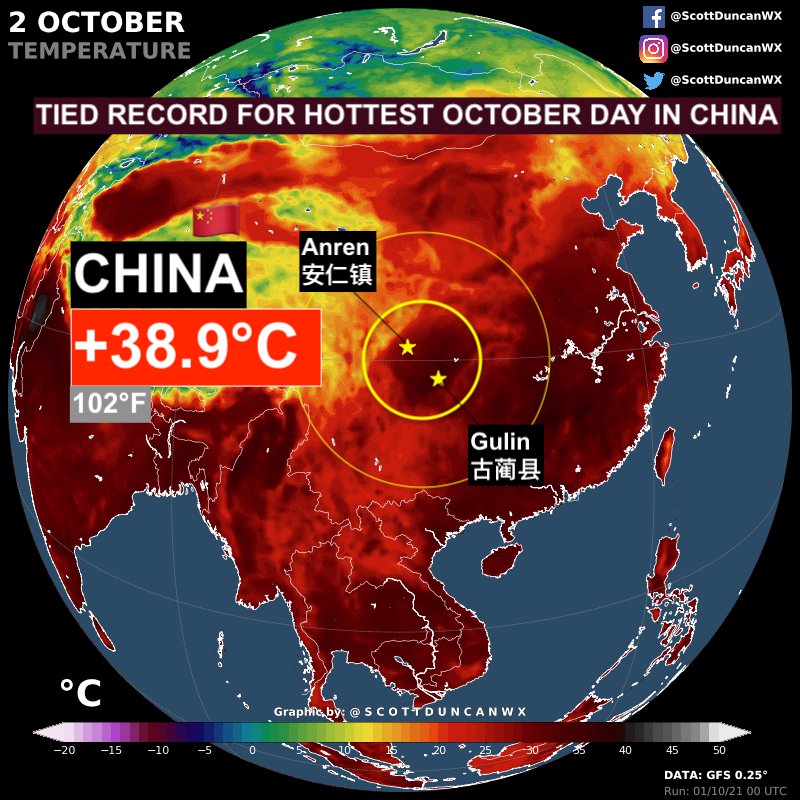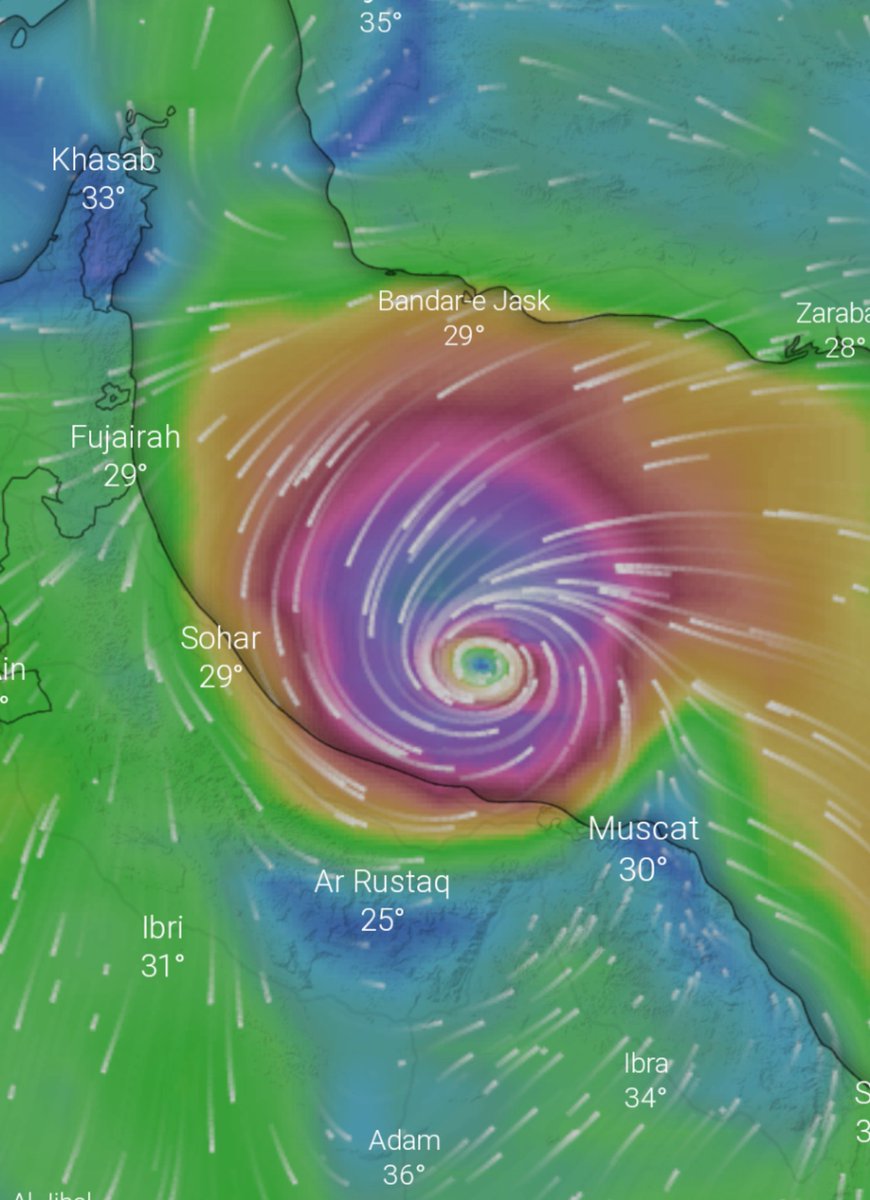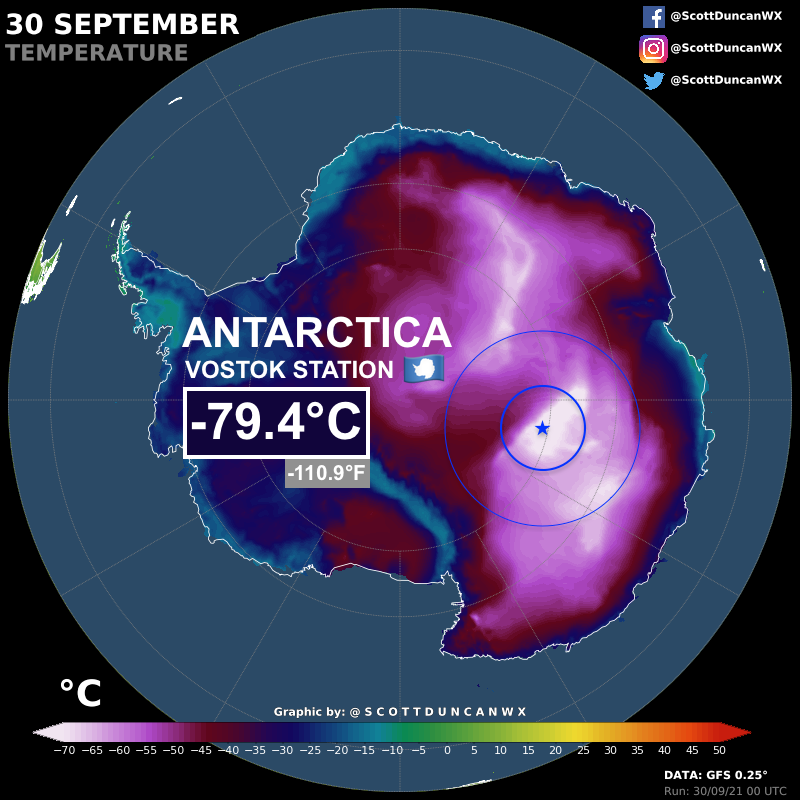
We have just observed the hottest (or joint hottest) October days in recorded history for 4 countries.
🇮🇷 Iran 46.0°C (new record)
🇲🇦 Morocco 43.5°C (new record)
🇨🇳 China 38.9°C (tied record)
🇰🇷 South Korea 32.3°C (new record)



🇮🇷 Iran 46.0°C (new record)
🇲🇦 Morocco 43.5°C (new record)
🇨🇳 China 38.9°C (tied record)
🇰🇷 South Korea 32.3°C (new record)




More about the South Korean 🇰🇷 record here
https://twitter.com/StabilizClimate/status/1444639886414258183?s=19
More about the record from Iran. This record was tied the day before too
https://twitter.com/EKMeteo/status/1444379922194178048?s=19
And more info on that Moroccan 🇲🇦record.
https://twitter.com/EKMeteo/status/1444053638905843716?s=19
• • •
Missing some Tweet in this thread? You can try to
force a refresh
















